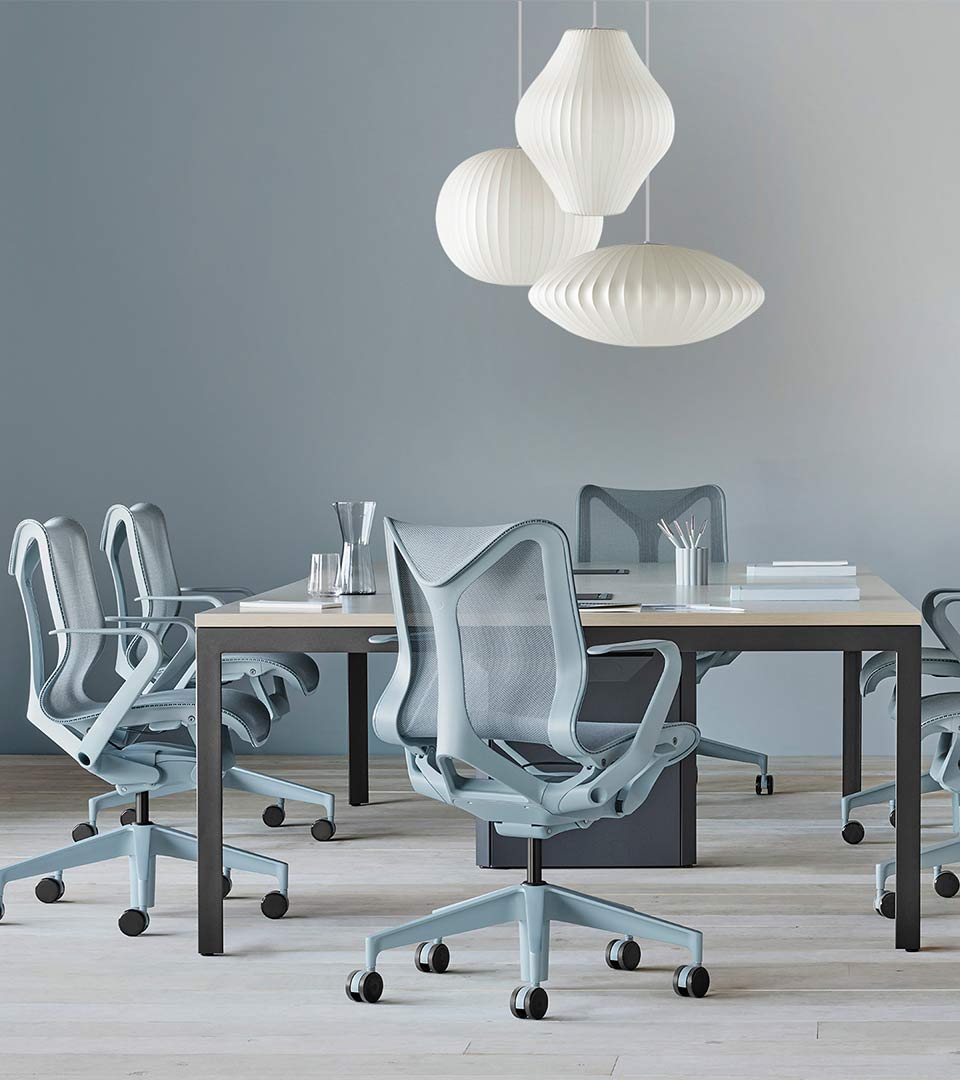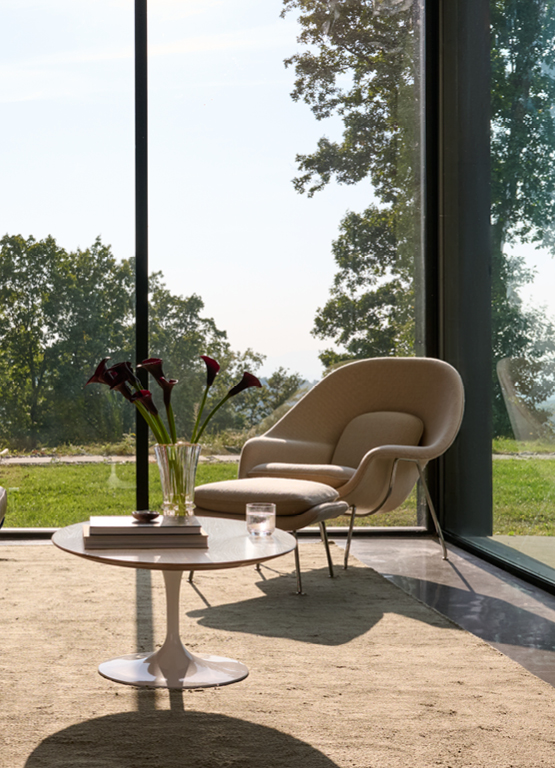Since its founding in 1938, Knoll has stood at the forefront of modern design, collaborating with some of the most important architects and thinkers of the 20th century. What emerged is not simply a catalogue of well-made furniture, but a body of work that helped shape the visual and spatial language of modern life.
The roots of Knoll’s identity lie in modernism, a movement that rejected ornament in favour of clarity, function, and material honesty. But while many adopted the aesthetic, Knoll understood the deeper intention. Its approach was holistic, from the Bauhaus influence of Marcel Breuer to the sculptural pragmatism of Eero Saarinen, the brand didn’t just respond to a design movement, it helped build one. Through its close relationships with leading architects, Knoll brought the ideals of modernism into the home, creating furniture that was architectural in nature but human in scale.
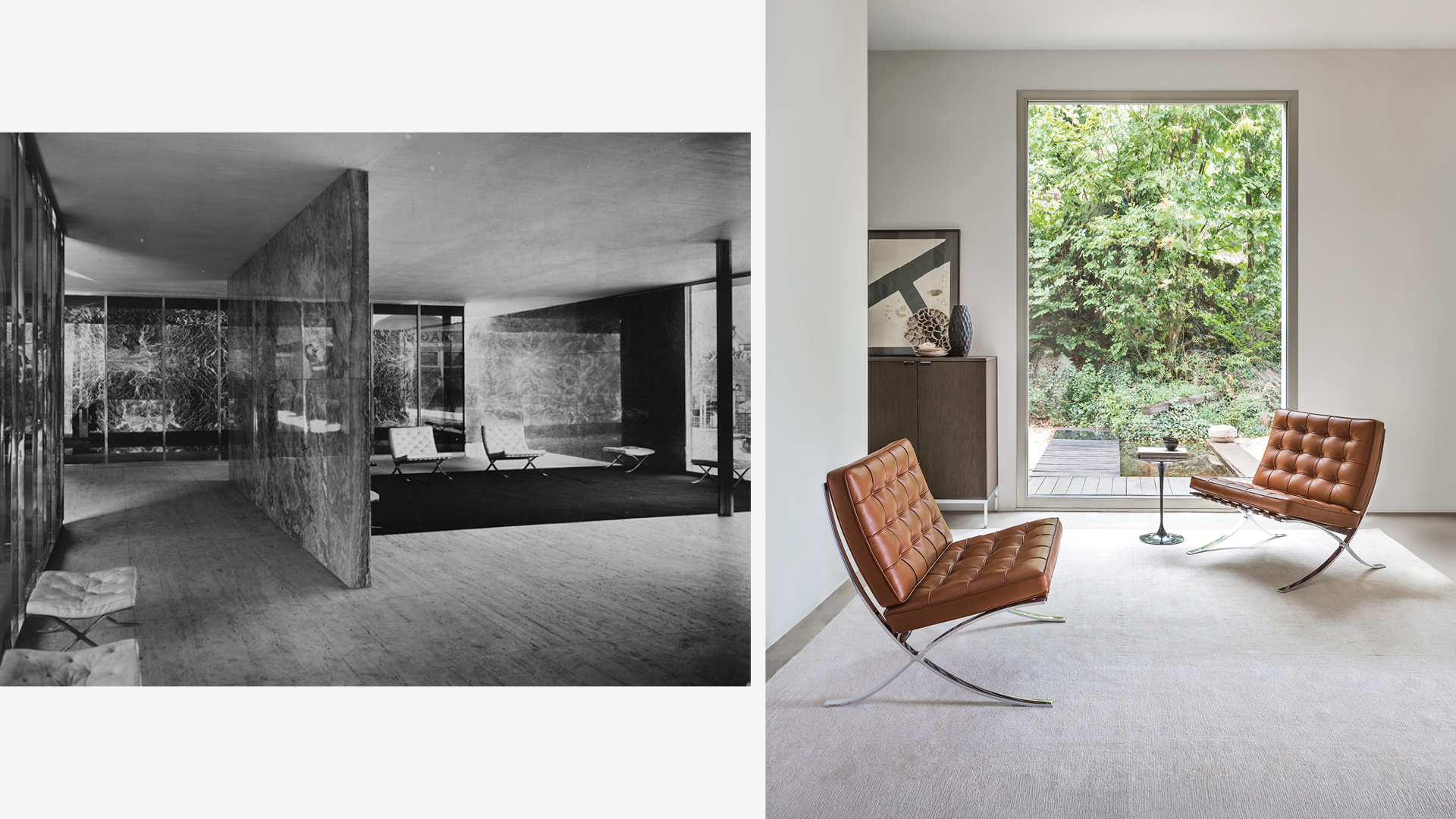
Pictured left: Barcelona Chair in the German Pavillion, 1929 | Pictured right: Barcelona Chair in Cognac Venezia Leather and Chrome Base
For example, the Barcelona Chair, originally designed by Ludwig Mies van der Rohe and Lilly Reich for the German Pavilion at the 1929 International Exposition in Barcelona. More than just a lounge chair, it became a symbol of modernist precision, graceful, balanced, and immaculately resolved. Its hand-finished leather cushions and flat steel frame remain a study in refined simplicity, offering a quiet monumentality that feels as relevant in a gallery as it does in a home.
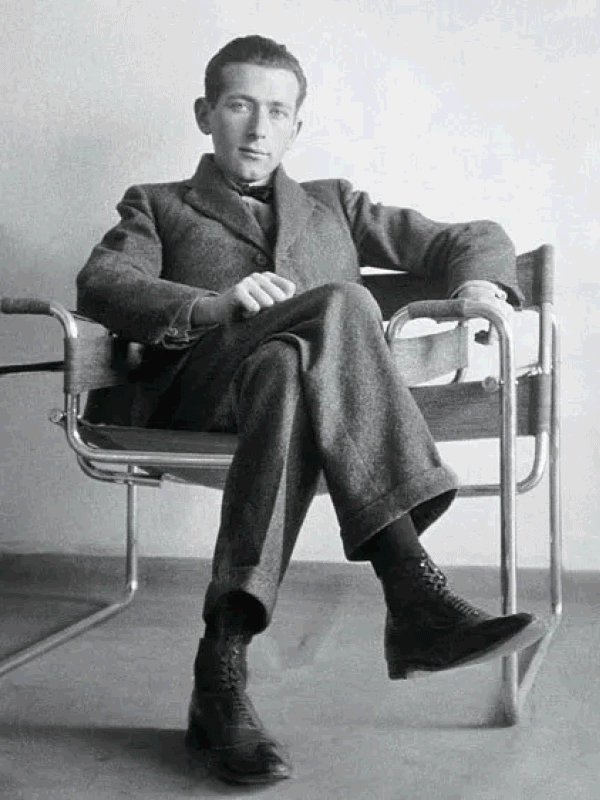
Pictured: Marcel Breuer in Wassily Chair
The Wassily Chair by Marcel Breuer, designed in 1925, was a breakthrough in material innovation. Using bent tubular steel inspired by bicycle construction, Breuer translated the Bauhaus philosophy into furniture form, functional, stripped back, and radically new. Nearly a century later, it still feels futuristic. Its openness, geometry, and graphic clarity have made it a perennial favourite in both residential and commercial interiors.
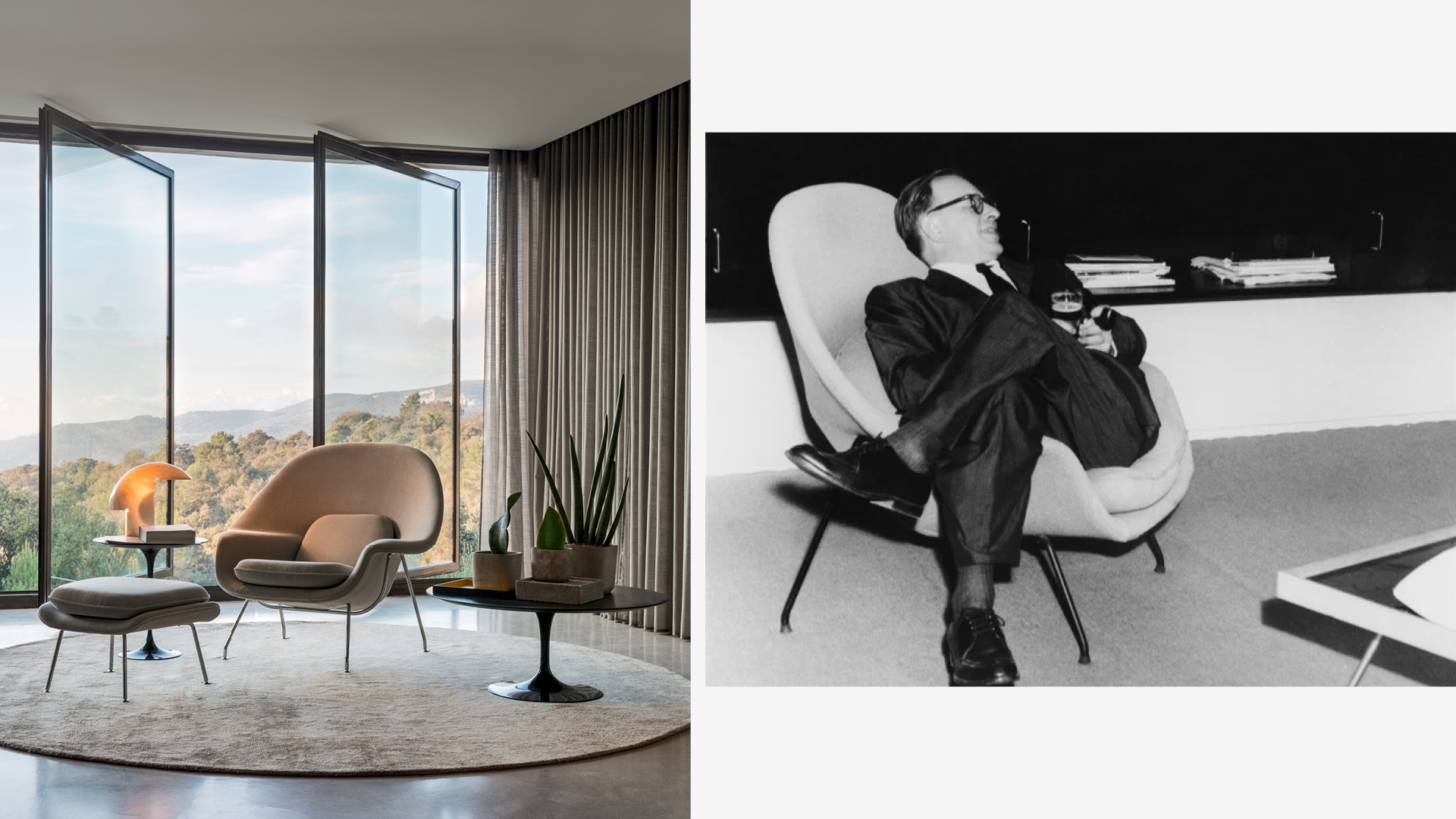
Pictured left: Womb Chair and Ottoman, and Saarinen Coffee Table | Pictured right: Eero Saarinen in Womb Chair
Then there’s the Womb Chair, designed in 1948 by Eero Saarinen in response to Florence Knoll’s brief for a chair that felt like “a basket full of pillows.” The result was something deeply expressive, a sculptural form that envelops the sitter, offering a sense of comfort and ease without sacrificing modernist principles. It was an early expression of emotional design: warm, welcoming, yet architecturally exact.
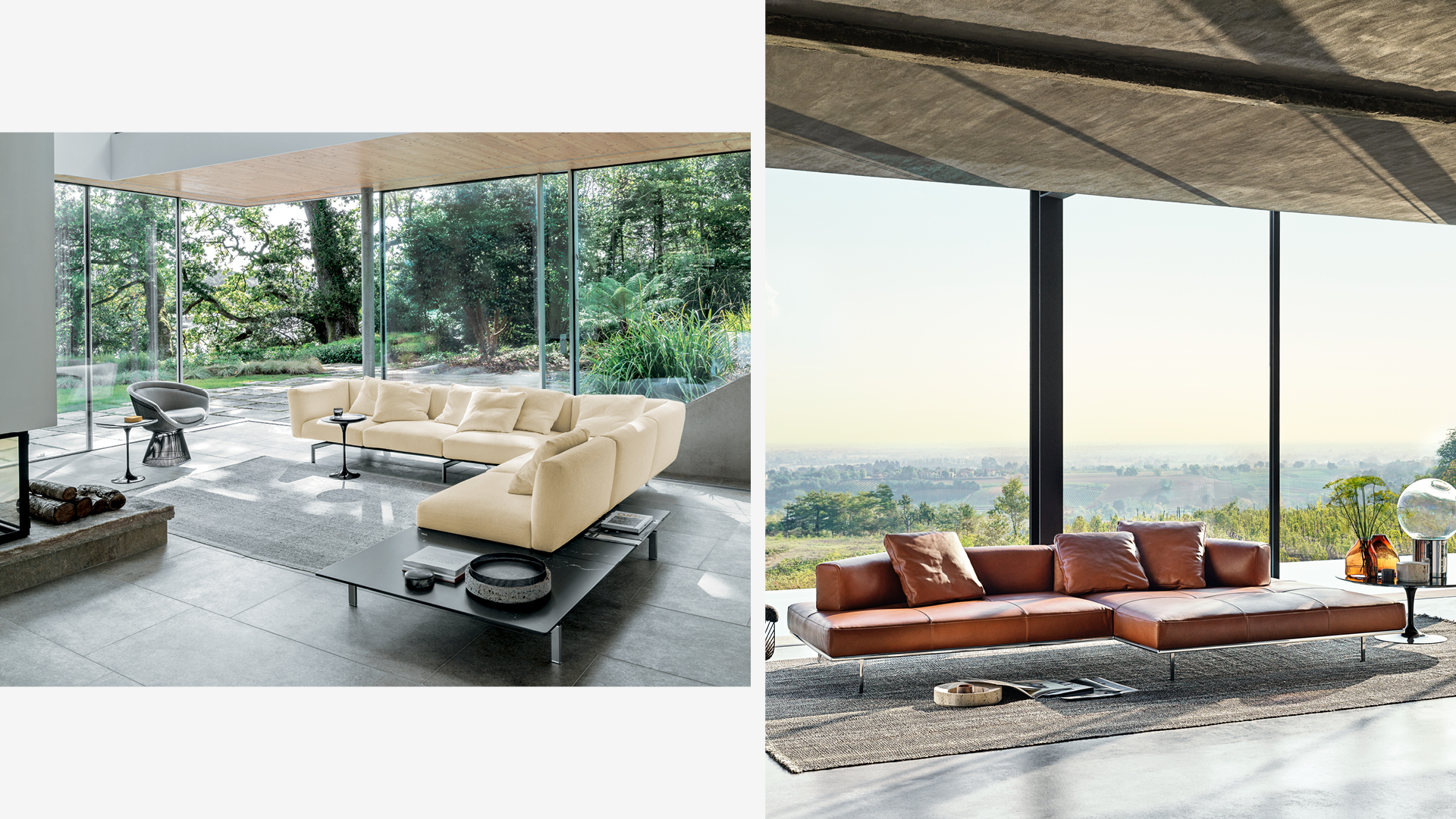
Pictured left: Avio Sofa and Platner Lounge Chair | Pictured right: Matic Sofa
While these pieces have become iconic, Knoll’s legacy doesn’t rest on history alone. In recent years, the brand has continued to evolve its language of modernism through collaborations with contemporary designers like Piero Lissoni. The Avio Sofa system is a masterclass in proportion and lightness, where modular cushions appear to float within a slim steel frame, simultaneously minimal and generous. The Matic Sofa, also by Lissoni, introduces a cantilevered profile and adjustable backrests, offering a responsive, technically sophisticated approach to lounging.
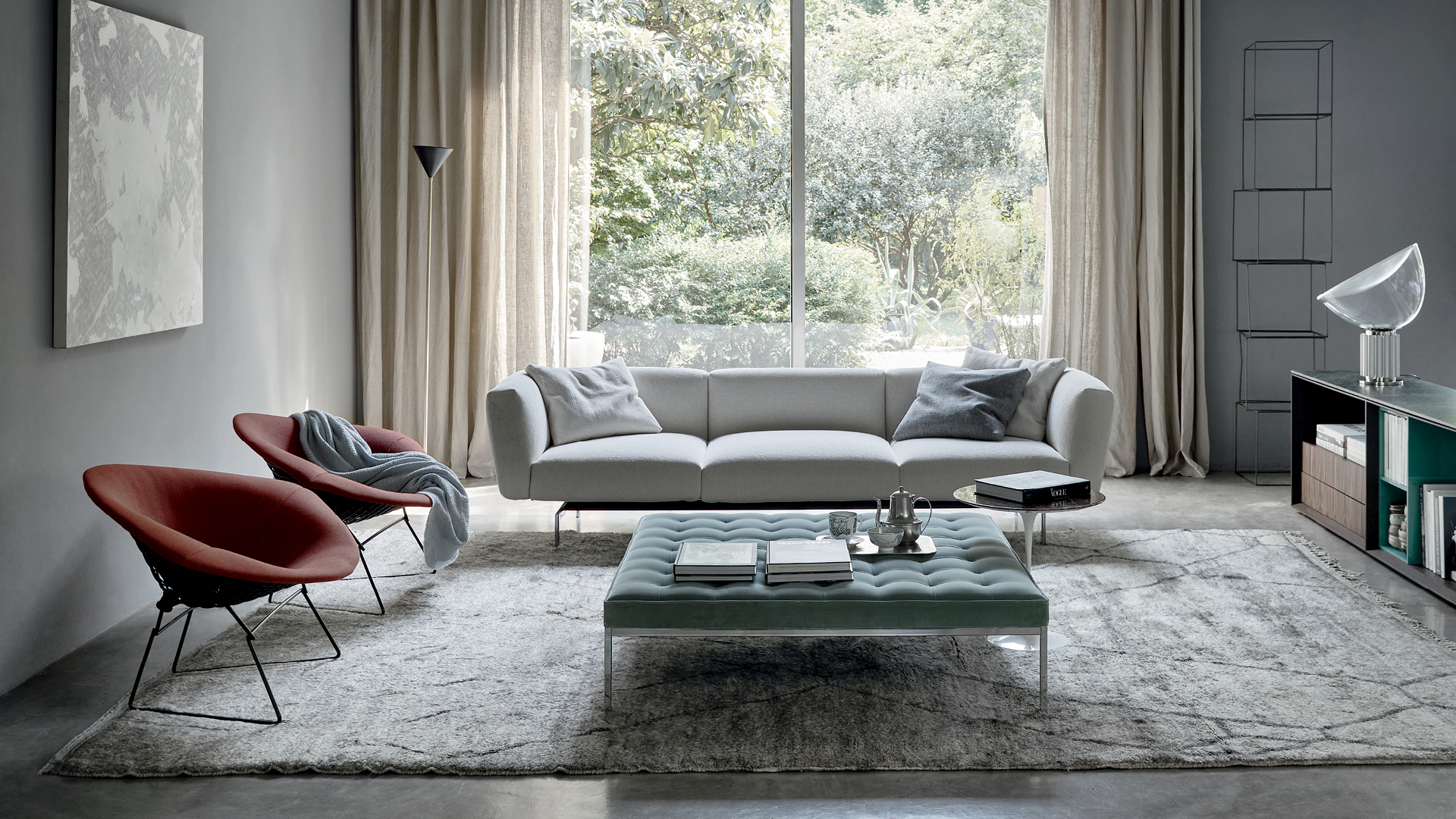 p>Pictured: Bertoia Diamond Chair Fully Upholstered, Avio Sofa, Saarinen Side Table and Florence Knoll Relaxed Square Bench
p>Pictured: Bertoia Diamond Chair Fully Upholstered, Avio Sofa, Saarinen Side Table and Florence Knoll Relaxed Square BenchWhat connects these designs historic and contemporary is an ongoing commitment to clarity, integrity, and purpose. They are not decorative, nor are they defined by trends. Instead, they represent a kind of design intelligence: thoughtful, rigorous, and enduring. In an age where the new can feel disposable, Knoll continues to offer a counterpoint—furniture that has been considered, tested, and lived with across generations.
To furnish a home with Knoll is to engage with a lineage of ideas. It’s about more than aesthetics—it’s about structure, intent, and the way design can quietly influence how we feel in a space. These pieces don’t demand attention, but they hold it. And in doing so, they continue to set the standard for what modern living can be.
Explore Knoll Now →

